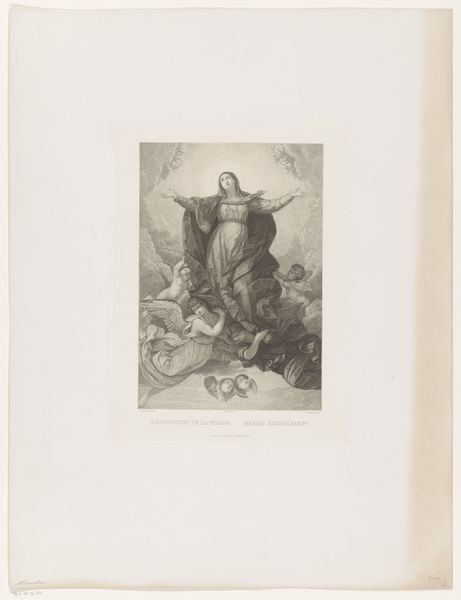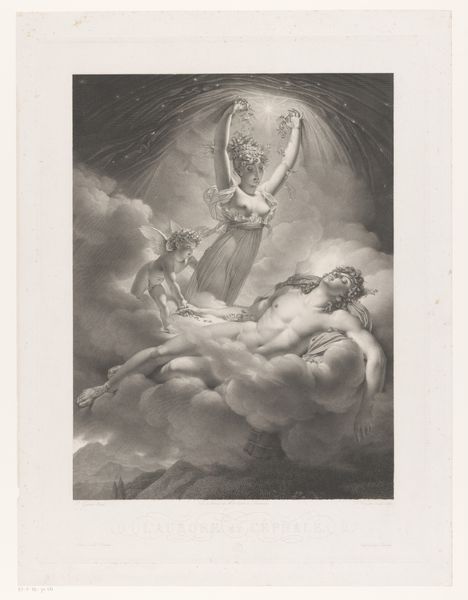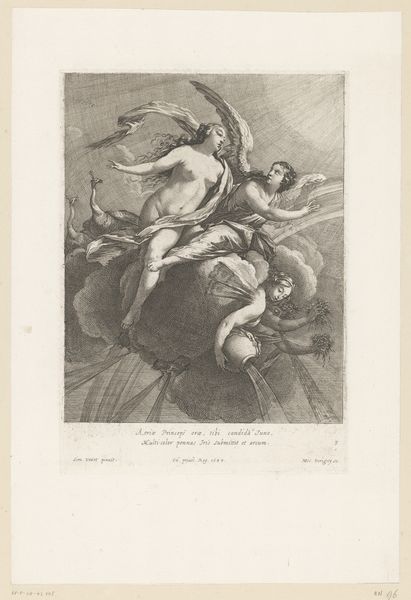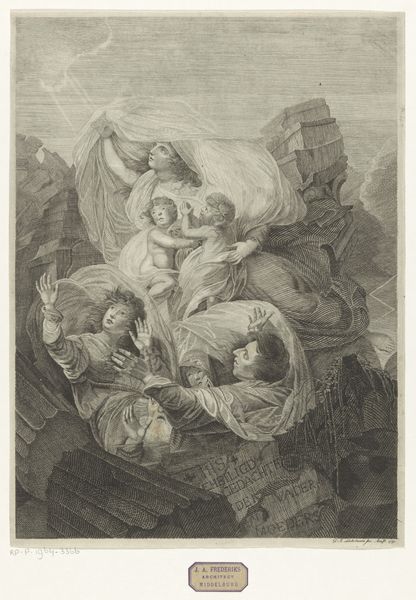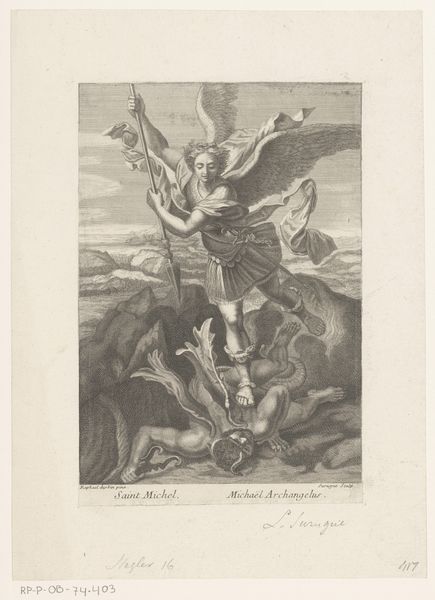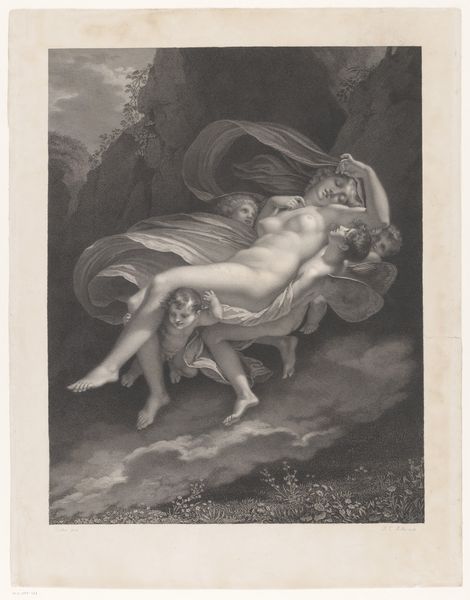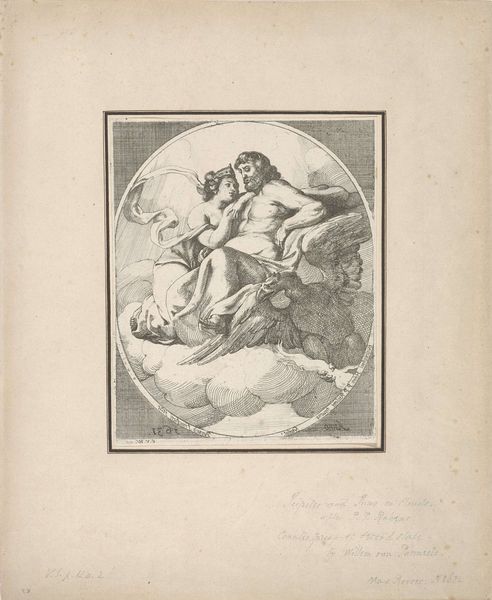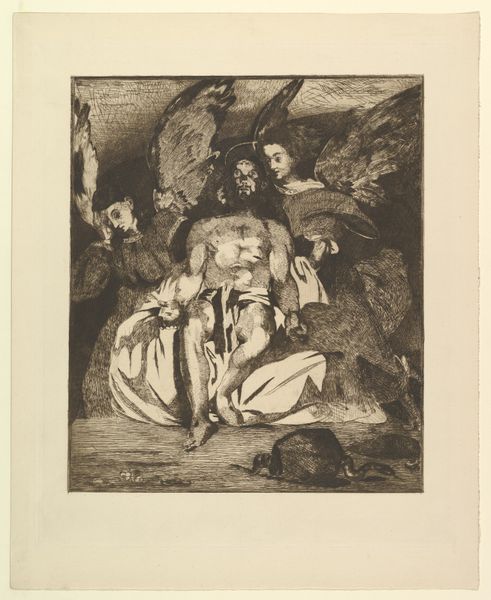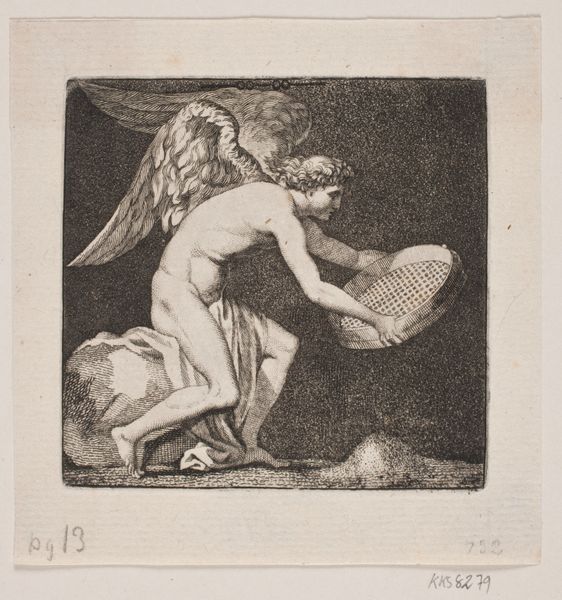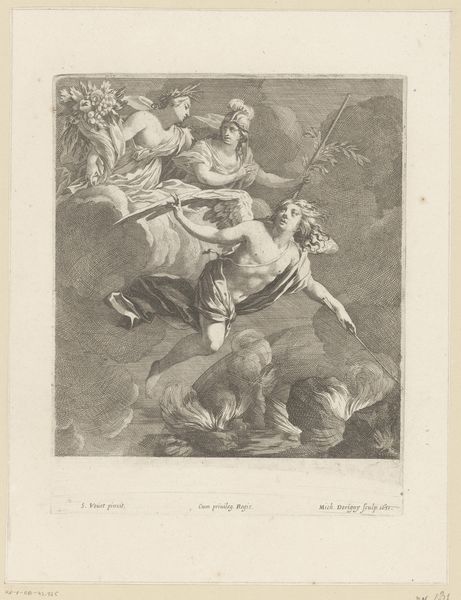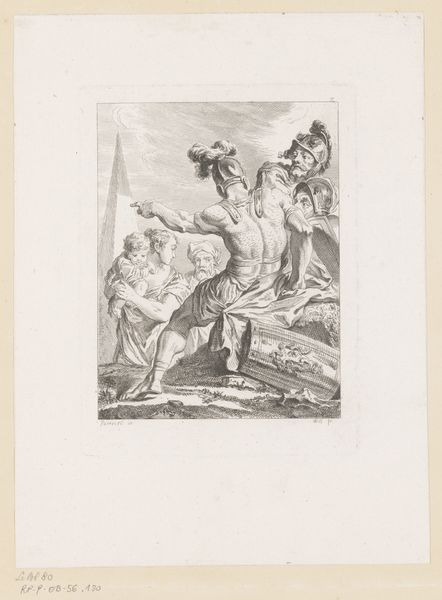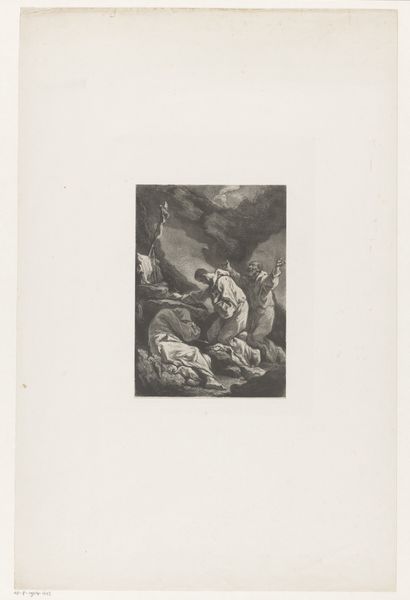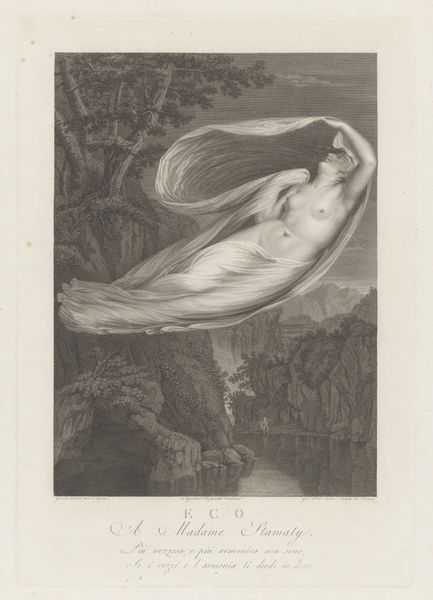
print, engraving
#
neoclacissism
#
allegory
# print
#
figuration
#
engraving
Dimensions: height 138 mm, width 91 mm
Copyright: Rijks Museum: Open Domain
Editor: So, this engraving, "Amor en Urania" by Amadeus Wenzel Böhm, made sometime between 1797 and 1823, strikes me as quite formal, almost staged, despite the figures floating on a cloud. What's your interpretation? Curator: It's definitely posed, isn't it? That's a hallmark of Neoclassicism, reflecting a desire to return to the order and idealized forms of the classical world. But let's think about what that 'staging' does. It elevates the scene, imbuing it with allegorical meaning, transforming figures into representations of larger ideas, Love and the Muse of Astronomy, Urania. Böhm uses imagery and composition for something to represent virtue or morality within society. Consider the political landscape in Europe during that time: did didactic art play a significant role in shaping public opinion and legitimizing certain ideologies? Editor: Absolutely, I hadn't thought about it in terms of actively legitimizing the social order, but that makes perfect sense. The clarity of the engraving, the very deliberate composition... it all speaks to a need for order, for control. Curator: And the location – suspended among the heavens. Does this reinforce Urania’s status or imply an aspiration of enlightenment? Editor: Hmm, is the point of connection being physical (with Urania), an ideal that can be embodied? Or does Böhm represent, with these celestial beings, aspirations beyond worldly possibilities? Curator: Precisely! That tension is key. What seems like simple illustration carries profound weight when viewed through a historical and socio-political lens. Understanding these things help us examine this piece critically. Editor: I agree! I’ll definitely consider these aspects as I keep digging in!
Comments
No comments
Be the first to comment and join the conversation on the ultimate creative platform.
